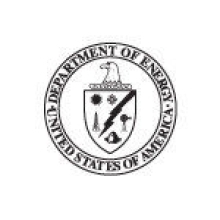
Section 321 of the Energy Independence and Security Act (EISA) establishes increased minimum energy efficiency standards for general service lamps. EISA does not ban incandescent light bulbs, but its minimum efficiency standards are high enough that the incandescent lamps most commonly used by consumers today will not meet the new requirements. Once implemented, the Act will essentially eliminate 40W, 60W, 75W, and 100W medium screw-base incandescent light bulbs.
This document provides an overview of the EISA provisions for general service lamps regarding:
- The definition of a general service lamp
- New minimum efficiency standards
- The effective date for new standards
- Exemptions
Definition of a General Service Lamp
General service lamps include:
- General service incandescent lamps
- Compact fluorescent lamps (CFLs)
- General service light-emitting diode (LED) or organic light emitting diode (OLED) lamps
- Any other lamps that the Secretary of the Department of Energy (DOE) determines are used to satisfy lighting applications traditionally serviced by general service incandescent lamps
In addition, general service lamps are:
- Intended for general service applications
- Medium screw-base lamps
- Designed for a light output between 310 and 2600 lumens
- Capable of operating at a voltage range at least partially within 110 and 130 volts
New Minimum Efficiency Standards
| Rated Lumen Ranges | Typical Current Lamp Wattage | Maximum Rate Wattage | Minimum Rated Lifetime | Effective Date | California Effective Date |
| 1490-2600 | 100 | 72 | 1,000 hours | 1/1/2012 | 1/1/2011 |
| 1050-1489 | 75 | 53 | 1,000 hours | 1/1/2013 | 1/1/2012 |
| 750-1049 | 60 | 43 | 1,000 hours | 1/1/2014 | 1/1/2013 |
| 310-749 | 40 | 29 | 1,000 hours | 1/1/2014 | 1/1/2013 |
Effective Date for New Standards
The effective date for each phase listed above indicates the first date that non-compliant products are prohibited from being manufactured or imported into the United States. California will implement the standards one year before the rest of the country.
Exemptions
Twenty-two types of incandescent lamps are exempt from the new minimum efficiency standards defined by EISA. DOE will monitor sales of these exempted lamp types after the legislation is implemented. If DOE determines that any exempted lamp type doubles in sales, EISA requires DOE to establish an energy conservation standard for that lamp type. This provision will prohibit any exempted lamp type from taking market share from the general service lamps affected by the EISA efficiency standards listed in the chart above.
Exempted lamps:
- Appliance lamps
- Black light lamps
- Bug lamps
- Colored lamps
- Infrared lamps
- Left-hand thread lamps
- Marine lamps
- Marine’s signal service lamps
- Mine service lamps
- Plant light lamps
- Reflector lamps
- Rough service lamps
- Shatter-resistant lamps (including shatter-proof and shatter-protected)
- Sign service lamps
- Silver bowl lamps
- Showcase lamps
- 3-way incandescent lamps
- Traffic signal lamps
- Vibration service lamps
- G shape lamps with a diameter of 5” or more
- T shape lamps that use no more than 40W or are longer than 10”
- B, BA, CA, F, G16-1/2, G-25, G-30, M-14, or S lamps of 40W or less